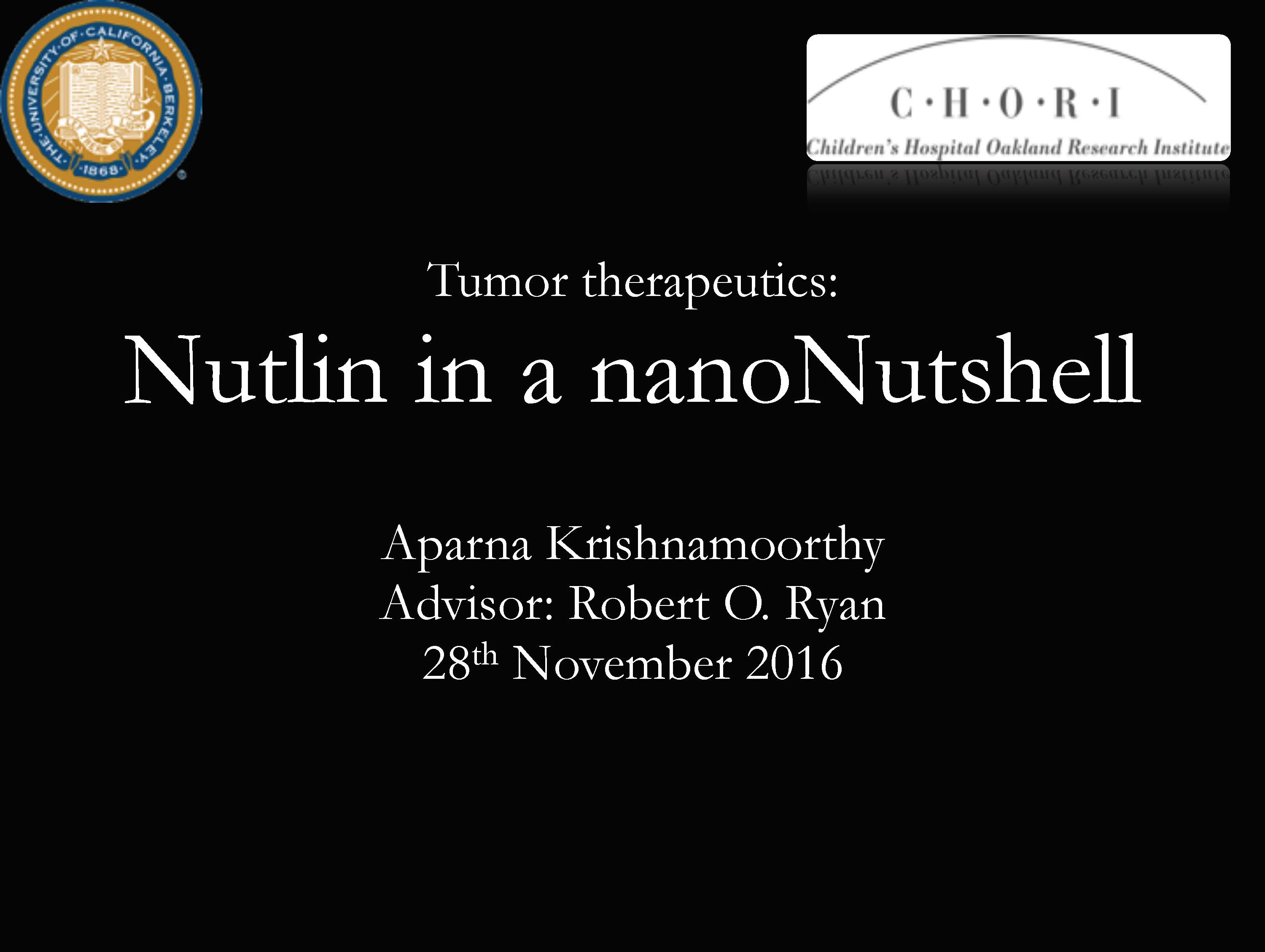Cushioning nutlin-3a (an anti-cancer drug) to bring out its best!

At the start of my doctoral training, I wanted to conduct a research study in cancer therapeutics. When I came across nutlin-3a, an anti-MDM2 small molecule developed by Roche with poor aqueous solubility, I jumped at the opportunity to work with the compound to improve its bioavailability. Since apolipoproteins and phospholipids are naturally found in our blood stream, I used a combination of the two, simulating 10-15nm sized reconstituted high density lipoprotein particles (rHDL) in order to improve the solubility of nutlin-3a . I used different brain tumor cell lines with specific mutations and confirmed that the nutlin-3a nanoparticles had biological activity and were able kill specific cell lines. This was a neat little research study that I included as part of my doctoral thesis.
Related publication:
Abstract:
Nanodisks (ND) are ternary complexes of phospholipid, one or more hydrophobic bioactive agents and an apolipoprotein scaffold. These nanoscale assemblies are organized as a disk-shaped lipid bilayer whose perimeter is stabilized by an apolipoprotein scaffold. Solubilization of hydrophobic bioactive agents is achieved by their integration into the ND lipid milieu. When the cis-imidazoline, nutlin-3a, was incubated with phosphatidylcholine and apolipoprotein A-I, it was conferred with aqueous solubility as judged by spectroscopic analysis. Nondenaturing polyacrylamide gel electrophoresis yielded evidence of a homogeneous population of ND particles ~9 nm in diameter. Gel ltration chromatography experiments revealed the association of nutlin-3a with ND is reversible. Biological activity of nutlin-3a ND was examined in three distinct glioblastoma cell lines, U87MG, SF763 and SF767. Incubation of U87MG cells with nutlin-3a ND induced concentration-dependent cell growth arrest and apoptosis. SF763 cells demonstrated modest cell growth arrest only at high concentrations of nutlin-3a ND and no apoptosis. SF767 cells were unaffected by nutlin-3a ND. Immunoblot analysis revealed nutlin-3a ND induced time-dependent stabilization of the master tumor suppressor, p53, and up regulation of the E3 ubiquitin ligase, murine double minute 2 in U87MG cells, but not the other glioma cell lines. The nanoscale size of the formulation particles, their facile assembly and nutlin-3a solubilization capability suggest ND represent a potentially useful vehicle for in vivo administration of this anti-tumor agent